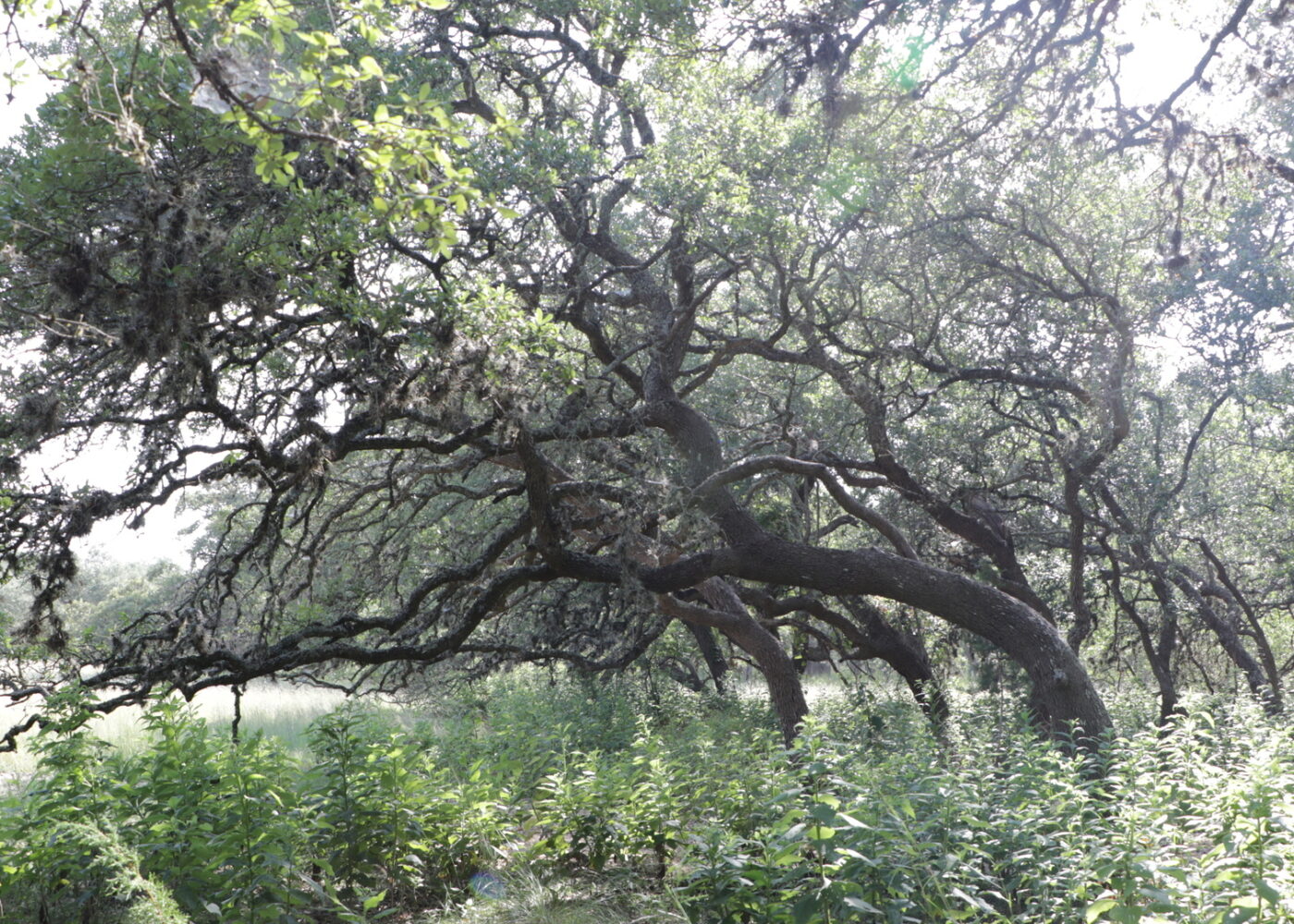This list includes both common and less commonly found invasive species in North Texas, but not everything.

Chinaberry (Melia azedarach): Introduced from Asia in the mid-1800s as an ornamental tree. Dark green leaves are doubly compound, alternate, deciduous, and display bright yellow fall colors. Clusters of lavender flowers form spherical, yellow fruit about ½ inch in diameter that persists on the tree in winter. The bark, leaves, and fruit are poisonous to humans, some livestock and mammals, including cats and dogs.
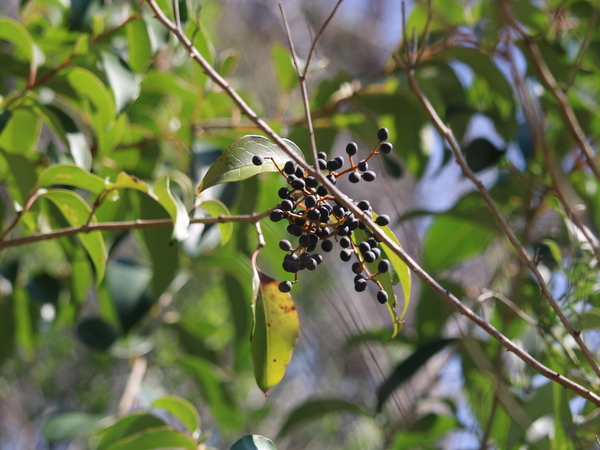
Chinese, Glossy, and Japanese Privets (Ligustrum spp.): Native to China and Europe and brought to the U.S. by the mid-1800s as ornamentals. Ligustrum can outcompete native vegetation and when not controlled can take over all the other plants, becoming the only one and changing the understory of a forest. Mostly evergreen, thicket-forming shrubs having opposite, elliptical leaves with smooth edges. Fragrant, white flowers form in spring and produce clusters of dark purple berries.

Nandina (Nandina domestica): Introduced from Asia and India in the early 1800s and widely planted as an ornamental. Evergreen, rigid shrub that grows up to eight feet in height, with multiple bushy stems that resemble bamboo. Glossy, compound green or reddish leaves, white to pinkish flowers in terminal clusters and bright red berries in fall and winter.

Chinese Tallow (Triadica sebifera): Also known as popcorn tree. Introduced from China around the 1700s as an ornamental and then in the 1900s the U.S. Department of Agriculture distributed it along the Gulf Coast to try to start a soap making industry. Deciduous tree reaching 60 feet in height. Readily invades open land and has oval shaped leaves that are alternate. During the fall the leaves display bright red coloring. Attractive white berries, also called popcorn berries, persist on the tree in the fall and winter.
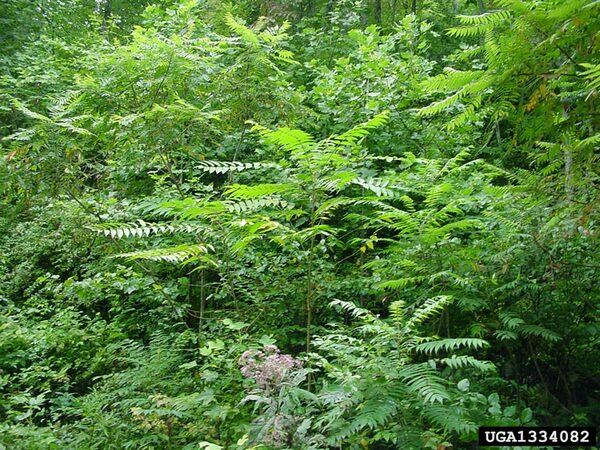
Tree-of-Heaven (Ailanthus altissima): Also known as ailanthus, Chinese sumac, and stinking sumac. Is originally from China. Rapid growing tree to 80 feet tall with alternate, compound leaves, 10 to 40 leaflets with smooth margins on one- to four-foot stalks. Large terminal clusters of small yellowish-green flowers yield wing-shaped fruit on female trees. Can quickly take over a site by forming thickets and dense stands. These trees produce toxins that prevent other trees from growing.
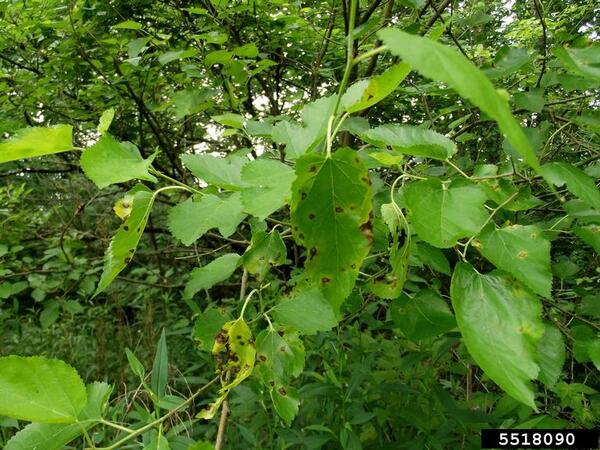
Paper Mulberry (Broussonetia papyrifera): Native to Asia. Paper mulberry was introduced for use as a fast-growing, ornamental shade tree. In its native lands, is used in paper making. In Hawaii and other parts of the South Pacific, its bark is used to make cloth. In the U.S. it is found from Illinois to Massachusetts, south to Florida and west to Texas. Paper mulberry is an invader of open habitats such as forest and field edges.
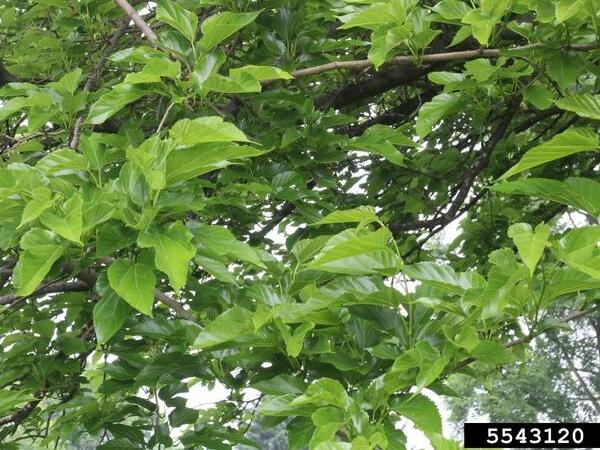
White Mulberry (Morus alba): Also known as common mulberry and silkworm mulberry, is native to China and India. A fast-growing tree with broad, glossy leaves, it can grow 40 to 60 feet tall. Its fruit can vary in color from white to red to deep purple. Fruit is readily eaten and dispersed by birds, leading to rapid spread.
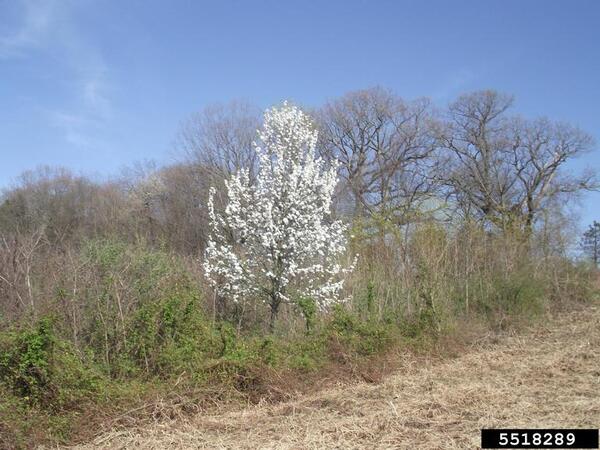
Callery Pear (Pyrus calleryana): Also known as Bradford pear. A small to medium-sized tree with a compact, symmetrical, pyramidal or columnar shape that spreads to become oval with age. Glossy, dark green leaves turn red or purple in fall. White flowers in the spring develop into small, round fruit often eaten and readily by birds. Many cultivars exist with varying characteristics.
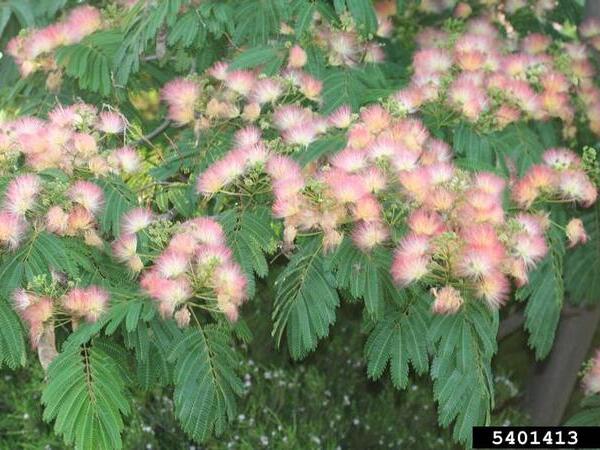
Mimosa (Albizia julibrissin): Also known as silk tree, was introduced from Asia in 1745 as an ornamental. Deciduous tree with alternate, doubly compound leaves and showy, fragrant pink blossoms. Legume, or bean, seedpods persist during winter. Leaves resemble those of honey locust.
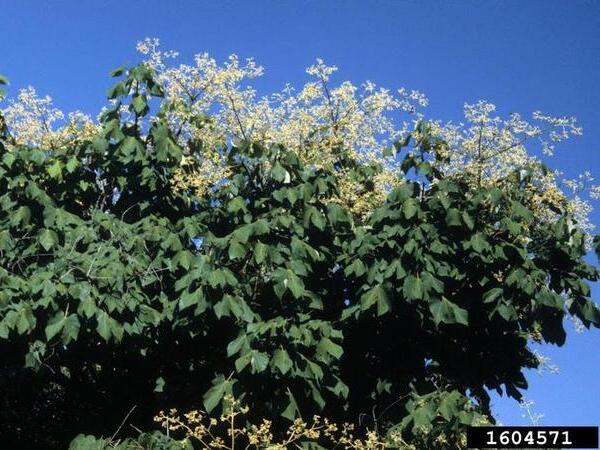
Chinese Parasoltree (Firmiana simplex): Native to eastern Asia and was introduced in the late 1700s as an ornamental tree. It has an unusual appearance for a deciduous tree, having green stems and bark and extremely large, three to five-lobed bright, green leaves. Each leaf is up to 12 inches across providing a large amount of shade. It has a dense, upright, oval canopy and reaches 35 to 50 feet in height, spreading 15 to 20 feet wide.
